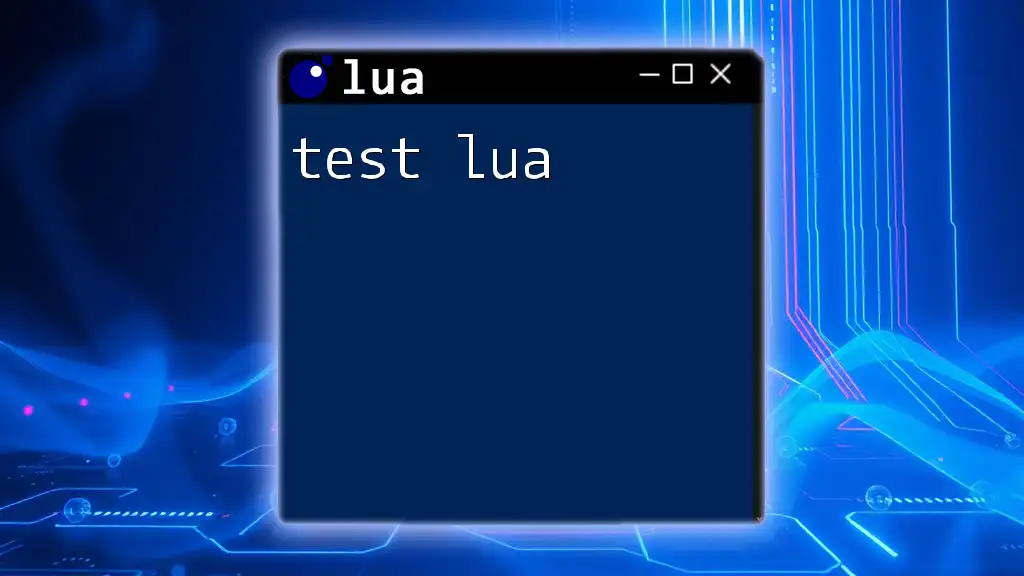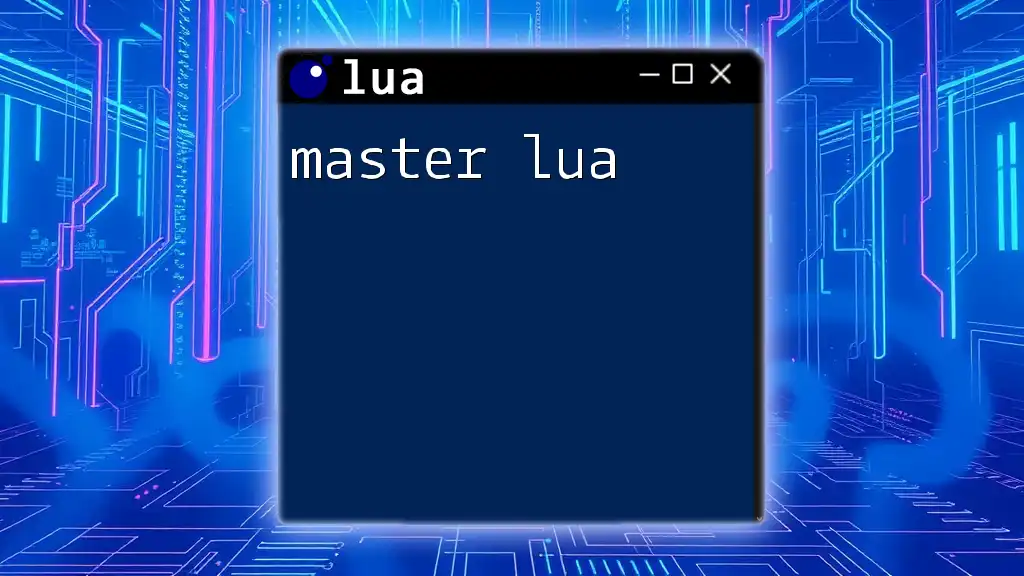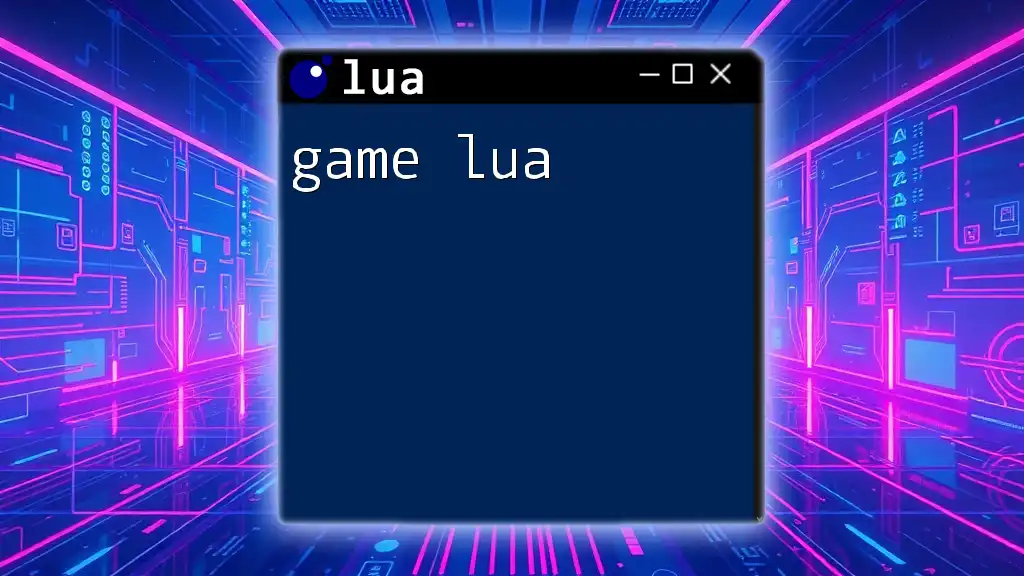In Lua, `self` is a reference to the current object in object-oriented programming, allowing you to access its fields and methods within a class.
Here’s an example showcasing the use of `self` in a simple Lua class:
MyClass = {}
MyClass.__index = MyClass
function MyClass:new(name)
local obj = setmetatable({}, MyClass)
obj.name = name
return obj
end
function MyClass:greet()
print("Hello, my name is " .. self.name)
end
local instance = MyClass:new("Lua User")
instance:greet() -- Output: Hello, my name is Lua User
Understanding Object-Oriented Programming in Lua
What is Object-Oriented Programming?
Object-Oriented Programming (OOP) is a paradigm that organizes software design around data, or objects, rather than functions and logic. The main principles of OOP include encapsulation, inheritance, and polymorphism. The benefits of OOP in programming include:
- Modularity: Code can be divided into reusable components.
- Flexibility: Changes can be made with minimal impact on other parts of the program.
- Maintainability: Easier to understand and manage complex software projects.
Overview of Lua’s Approach to OOP
Lua provides a flexible and straightforward way to implement OOP concepts without enforcing strict class-types, allowing developers to create their own systems. Lua uses tables and metatables to simulate classes and methods, making it easy to build flexible and functional code structures.

The Role of Self in Lua
Defining Self
In Lua, the `self` keyword is used within methods to refer to the object instance itself. Think of `self` as a way to access the attributes and methods of the current object. Understanding how `self` works is crucial when defining methods for classes.
How Self Works in Functions
To distinguish between regular functions and methods that involve `self`, let’s consider the following code snippet. This example demonstrates how to create a basic function and a method using `self`.
local Dog = {}
function Dog:new(name)
local obj = {}
setmetatable(obj, self)
self.__index = self
self.name = name
return obj
end
function Dog:bark()
print(self.name .. " says woof!")
end
local myDog = Dog:new("Buddy")
myDog:bark() -- Output: "Buddy says woof!"
In this example, `Dog:new` is a constructor that initializes a new object, while `Dog:bark` is a method that utilizes `self` to access the object's `name` property.

Creating Classes and Adding Methods Using Self
Basic Class Creation
Creating a class in Lua simply involves defining a table and using it to create its instances. When defining methods within these tables, you must include `self` as the first parameter, so that you can reference the object through which the method is called.
Code Snippet: Creating a Simple Class
local Car = {}
Car.__index = Car
function Car:new(model, year)
local obj = setmetatable({}, Car)
obj.model = model
obj.year = year
return obj
end
function Car:display()
print("This car is a " .. self.year .. " " .. self.model)
end
local myCar = Car:new("Tesla", 2021)
myCar:display() -- Output: "This car is a 2021 Tesla"
In this snippet, we define a `Car` class and create its instance using the `new` method, leveraging `self` to display both the model and year properties.

Self and Inheritance in Lua
Understanding Inheritance
Inheritance is a fundamental concept in OOP that allows one class to inherit properties and methods from another, promoting code reusability. This helps create a natural hierarchy between classes.
Implementing Inheritance with Self in Lua
When implementing inheritance in Lua, you can set up a base class and then create derived classes that inherit its properties. This is typically achieved using metatables.
Code Snippet: Inheritance Example
local Vehicle = {}
Vehicle.__index = Vehicle
function Vehicle:new(type)
local obj = setmetatable({}, Vehicle)
obj.type = type
return obj
end
function Vehicle:info()
print("This vehicle is a " .. self.type)
end
local Car = setmetatable({}, { __index = Vehicle })
function Car:new(model, year)
local obj = Vehicle.new(self, "Car")
obj.model = model
obj.year = year
return obj
end
local myCar = Car:new("Toyota", 2020)
myCar:info() -- Output: "This vehicle is a Car"
Here, `Car` inherits from `Vehicle`. The `Car:new` method utilizes `Vehicle.new` to ensure that the type is properly set while also initializing its specific properties.

Common Mistakes with Self in Lua
Misplacing the Self Parameter
One of the most frequent errors occurs when programmers forget to include `self` in their method definitions or when they incorrectly reference it. This can lead to unexpected errors in code execution.
Forgetting to Set Metatables
If you forget to set the metatables correctly when creating an instance, the methods will fail to recognize `self`, leading to runtime errors or unexpected behavior. Always ensure that the metatable is set appropriately using `setmetatable()`.

Best Practices for Using Self in Lua
Maintain Clarity in Code
Ensuring clarity in how `self` is utilized makes the code more maintainable. Some tips include:
- Consistent Naming: Use descriptive, clear names for properties and methods.
- Keep Methods Simple: Avoid overly complex methods that may confuse the reference of `self`.
Testing and Debugging Techniques
When debugging Lua code, especially when using `self`, consider the following strategies:
- Print Statements: Use print statements to debug the values of `self` and object properties at different execution points.
- Debugging Tools: Take advantage of Lua debugging tools that allow you to set breakpoints and inspect variable states.

Conclusion
In summary, understanding the `self lua` keyword is vital for mastering object-oriented programming in Lua. By effectively leveraging `self`, you can create clear, reusable, and maintainable code. Practicing these principles will enhance your proficiency with Lua and contribute significantly to your programming capabilities.

Call to Action
If you're eager to dive deeper into the world of Lua programming, consider utilizing our services designed specifically for those who want to learn how to implement Lua commands quickly and effectively. Visit our site for more resources and courses tailored to beginner and advanced programmers alike!

















